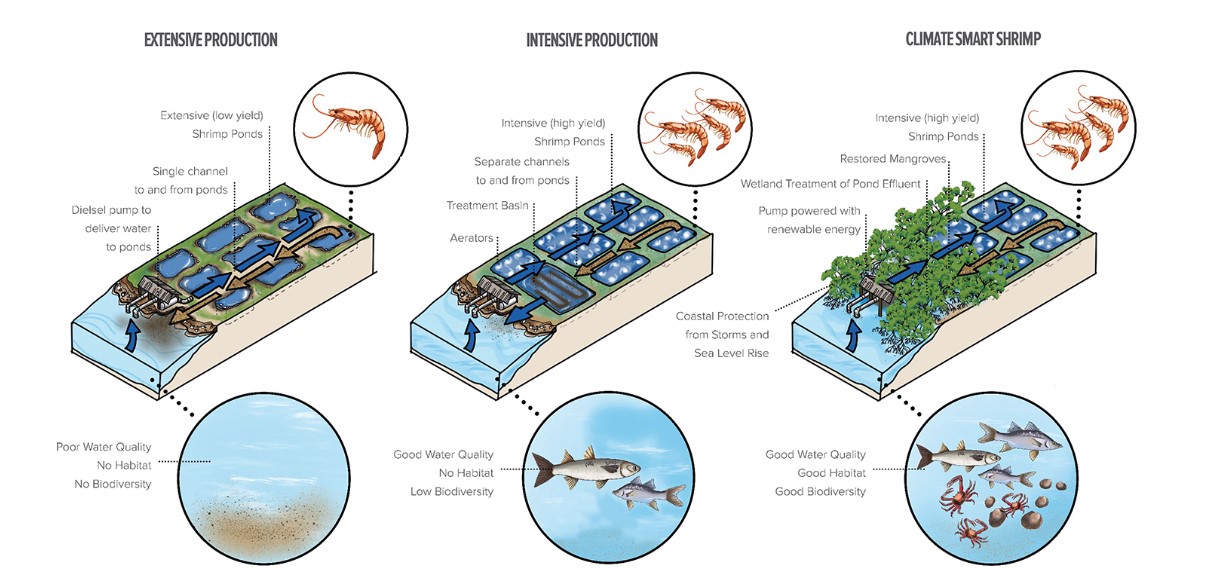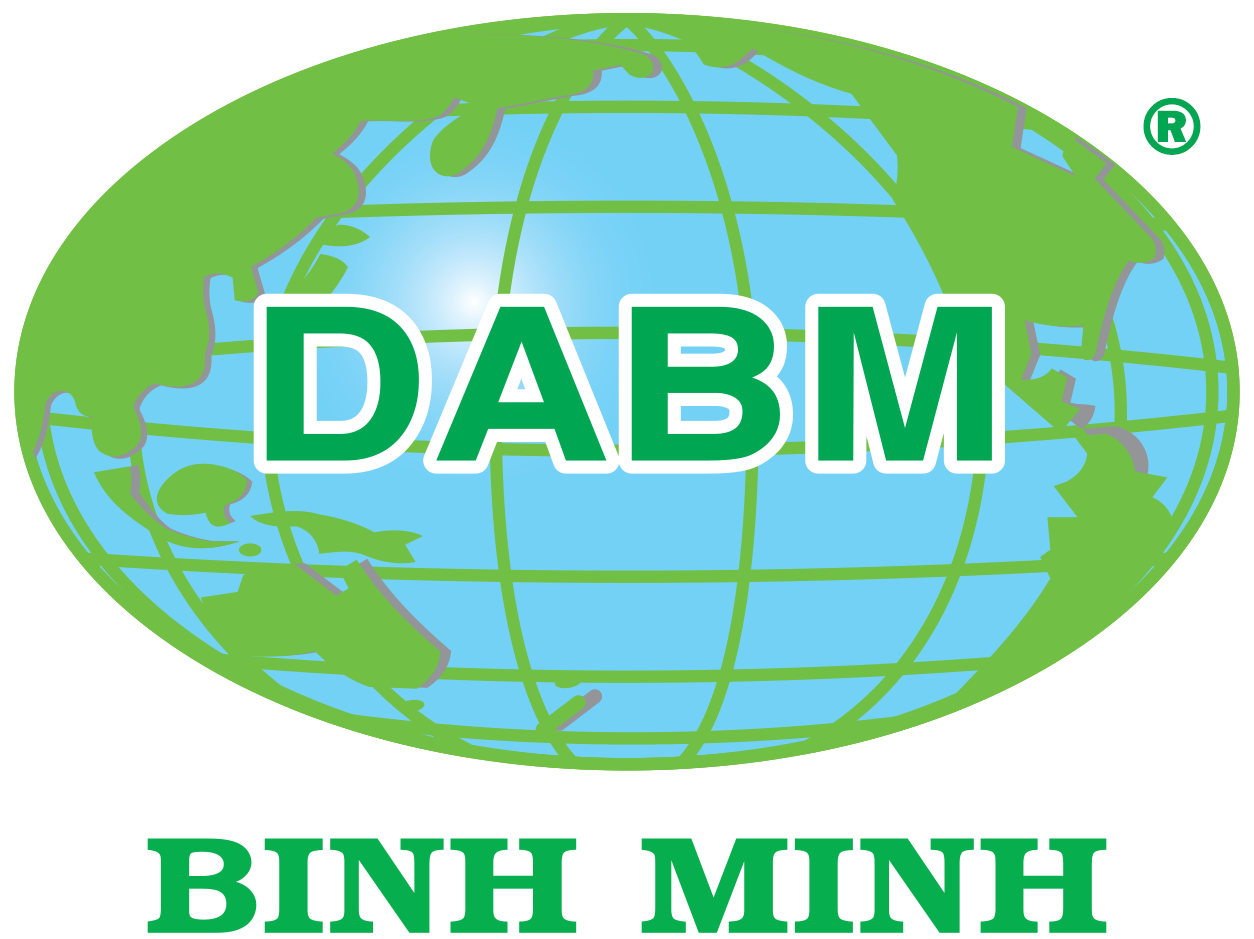Shrimp farming and mangrove restoration can be intertwined to benefit farmers, the environment and local communities

Mangrove forests are vital ecosystems that offer ecological services, such as carbon sequestration and habitats for a range of species. They also provide livelihoods for coastal communities and protection from erosion, coastal flooding and rising sea levels.
However, mangroves have been declining globally, mainly due to human activities, including shrimp farming. With the global shrimp market poised for further growth, farming the species responsibly is a pressing issue.
Luckily, transformation is proving possible. Recent research offers a comprehensive look at the cost of reversing the damage, while new initiatives are helping shrimp farms restore mangrove ecosystems and enhance their ecological benefits.
In Ecuador and Indonesia, United States-based NGO Conservation International is working with shrimp farmers to increase production on part of their land while restoring mangroves on the rest.
“Globally, the shrimp industry grew so fast that regulation often failed to keep up,” Dane Klinger, aquaculture director at Conservation International, told the Advocate. “Mangrove deforestation occurred to make way for new ponds, but this resulted in a loss of climate adaptation and mitigation benefits. More recently, farms have begun increasing production on a per-hectare basis, which can lead to more problems. Cramming shrimp into ponds increases waste accumulation and raises the risk of pollution in nearby waterways and ecosystems if farm effluent isn’t treated. However, we found that there was a way to address these challenges.”
Conservation International and partners are redesigning shrimp farms: responsibly upgrading production on a smaller area while incorporating wastewater treatment to improve water quality coming off the farms. In tandem, mangroves are restored on part of the farms, further improving water quality and delivering ecosystem services.
Pilot programs are underway in Ecuador and Indonesia, where farmers receive financing and technical expertise to restore mangroves and responsibly intensify production, producing more shrimp, increasing profits, and providing ecosystem services.

“The approach involves land that is abandoned or already in production,” said Klinger. “We recognized the opportunity to help farmers intensify with reduced risk, helping them produce more on a given hectare. Because they can farm more on less land, mangroves can be restored on other parts of their farms, creating large patches of restoration. When engineered correctly and paired with other wastewater treatment systems, the mangroves can absorb nutrients from the farm and improve local water quality. The idea is to help farmers responsibly intensify production on part of their farm, while restoring mangroves on the rest.”
Indonesia’s Mahakam Delta in east Kalimantan is one area where widespread mangrove deforestation occurred to make way for shrimp ponds. In 1989, 98 percent of the delta was mangrove forest and two percent was shrimp ponds. By 2020, however, mangrove forests covered just 45 percent and shrimp ponds 55 percent.
To address this issue, a silvofishery approach – the integration of mangroves into shrimp farms – has been touted as a potential solution for the Mahakam Delta. The silvofishery model involves cultivating multiple species (such as shrimp, fish, crabs and seaweed simultaneously) in one pond over a set period. Mangroves are strategically planted in specific areas within the ponds.

Esti Handayani Hardi, a professor at the Faculty of Fisheries and Marine Sciences at Mulawarman University, has studied two silvofishery approaches: empang parit (trench pond), which involves digging a canal around a shrimp pond and planting mangroves, and komplangan, which keeps mangroves around the pond while leaving the pond itself clear. Her research concludes that the komplangan model yields twice the harvest of the trench model due to better water filtration and nutrient circulation.
“The silvofishery model leads to more effective and sustainable mangrove restoration and shrimp farming,” said Hardi. “Mangroves maintain water quality, reducing the need for costly feed and chemicals, while farmers can harvest shrimp and other species like crabs, seaweed and fish. This diversification hedges against market volatility and disease outbreaks. Shrimp raised in silvofishery systems often have enhanced meat quality due to their natural diet and healthier environment, while the model generates employment in mangrove planting, pond management and harvesting, and enhances local food security.”
Muara Badak Ulu Village in east Kalimantan is successfully implementing the silvofishery model. There, production has increased from approximately 200 per hectare per cycle to 400, while fish and shrimp yields harbor higher amino acid, fatty acid and DHA content compared to conventional shrimp farming. Engaging the community in mangrove management has also fostered ownership and empowerment, said Hardi.
Conservation International’s pilots have also produced benefits in terms of climate mitigation and coastal protection, as well as increased shrimp production and profitability. There are also opportunities for stakeholders such as fisheries cooperatives to benefit directly, particularly in Ecuador, where Klinger and Conservation International are working on a site that is managed by a fisheries cooperative.
“We are working with engineers and others to restore the mangroves by changing the hydrology and water flow across the site,” said Klinger. “The fisheries cooperative has a Conservation Use Agreement with the Ecuadorian government, which enables them to harvest different commodities in those mangroves as long as they meet certain environmental criteria. In this way, the fisheries cooperative directly benefits from the mangrove restoration, while also monitoring and overseeing the restored habitat.”

In 2023, the US-registered nonprofit Sustainable Fisheries Partnership (SFP) released a briefing highlighting the opportunity for shrimp farms to protect and restore mangroves. It includes a need to focus on an approach that allows restoration activities to operate at scale across defined areas such as a jurisdiction, district or ecosystem.
This approach opens the door for mangrove restoration to be integrated into Aquaculture Improvement Projects (AIPs) that operate at the landscape level and establish policies and management practices across whole production areas. By bringing together multiple stakeholders, these initiatives aim to increase shrimp productivity, build more productive, resilient and sustainable supply chains, and in turn, create space for mangrove restoration.
“SFP has always advocated that improvements should be done at scale to be impactful and we want to restore mangroves on a large-enough scale to bring back the full range of ecosystem services that they provide,” said Paul Bulcock, aquaculture information manager at SFP. “Our research shows that active and abandoned aquaculture ponds provide the setting for mangrove restoration, which is where shrimp farming comes in. Depending on the species and production intensity, beneficial farming practices or restoration of mangroves can be scaled up, driving further improvements at scale and reducing fragmentation.”
Giving land back to mangroves while increasing shrimp production sounds great on paper. But Bulcock acknowledges the challenges, such as costs involved, the need for investment and the time it takes for mangroves to return (around 10 years before significant recovery).
Meanwhile, increased shrimp production could result in higher disease, mortality rates or animal welfare concerns. To address this, Conservation International is working with Indonesian aquaculture technology firm JALA to provide monitoring capabilities and improvement services for farmers to keep their shrimp healthy. It’s also working to scale up its approach by developing a loan fund to finance further projects. The aim is to address the high cost of farm intensification and establish production and restoration models that are better for mangroves, shrimp and farmers alike.
“We believe that there is an appetite among stakeholders in different geographies to understand, replicate and adapt our approach, and hope that our work can represent the full gamut of responsible production and credible restoration models,” said Klinger. “We will continue highlighting that our approach benefits mangroves and the farmer, that their production will be less risky, less disease prone and more profitable.”
“There is a lot of interest toward environmental protection and restoration, and climate issues remain paramount,” said Bulcock. “Projects that enable shrimp farming to get involved in restoring mangroves are a great way for the shrimp sector to become a steward of the coastal environment. It can undo what it was responsible for and go beyond this.”
By Bonnie Waycott
Read more:
- Carbon clarity and a call to action: Shrimp industry urged to start work on low-emissions future
- Study uses passive acoustic monitoring to quantify effects of temperature, ammonia and nitrite nitrogen on Pacific white shrimp feeding
- From Rice To Shrimp. Can Vietnam’s Rice Farms and Aquaculture Survive Climate Change?

 Tiếng Việt
Tiếng Việt 中文 (中国)
中文 (中国)